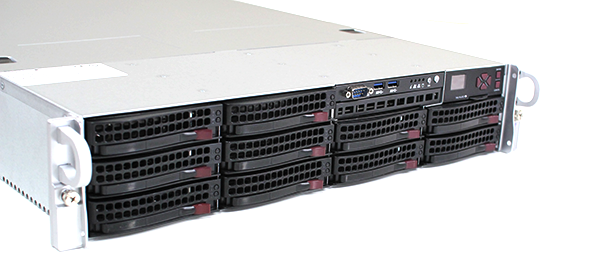Over the past two months, we have looked at various aspects of the Supermicro Hyper-Speed platform. Since receiving the unit, we have run it at greater than 90% load for over two months. At this point it is appropriate to give a longer term review and verdict on the platform. For those not familiar with the Supermicro Hyper-Speed line, it is a specialized server platform that comes in both 2U server and tower workstation form factors. The platform takes two especially selected Intel Xeon E5 series CPUs and increases both core and memory clocks. When the selected CPUs are the fastest available, such is the case with the Intel Xeon E5-2687W CPUs we used, it creates the fastest platforms around in terms of dual socket performance. The other side to the Supermicro Hyper-Speed equation is that this speed-up involves using qualified components in the servers to guarantee reliability. Let’s take a look at what the platform offers.
Test Configuration
Supermicro sent the following test configuration for our testing (although we used the opportunity to validate the Kingston DIMMs.) This represents one common configuration for a compute node. One other popular configuration is using dual Intel Xeon E5-2643CPUs (4C/8T) for applications where one needs high clock speed and lower core counts due to per-core license costs.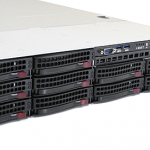
- Processors: Intel Xeon E5-2687W @ stock and 3.224GHz base clocks
- Chassis: Supermicro SYS-6027AX-TRF with Supermicro X9DAX-iF Motherboard
- Memory: 64GB using 8x 8GB Kingston 1600MHz Registered ECC DDR3 DIMMs
- SSD: Samsung 830 256GB
- Operating System: Ubuntu Server 12.10
This gives us a fairly lean configuration which we used for a majority of the testing with the Supermicro Hyper-Speed line.
Supermicro Hyper-Speed
In the first series of articles we looked at the internals and components of the Supermicro Hyper-Speed platform and how customized the solution is. The system is designed to use massive passive coolers even with 150w Intel Xeon E5-2687W processors running at even higher clock speeds.

The large motherboard allows for plenty of expansion options. The Supermicro SYS-6027AX-TRF Hyper-Speed platform has two PCIe x16 low profile slots that are situated away from the CPU heatsinks for larger cards The blue slot is a Supermicro proprietary UIO slot which is more or less PCIe x8 reversed slot that has options for lower cost slot specific cards. When one purchases a SYS-6027AX-TRF adding these UIO options can save up front purchase costs. There are three PCIe x8 physical slots and one x4 PCIe slot that is shared with the UIO slot. The Supermicro Hyper-Speed platform can house a lot of CPU, memory and expansion cards.
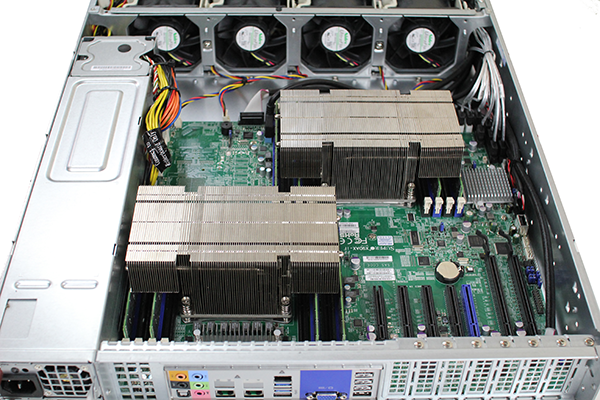
In terms of management, Supermicro sells the units with their IPMI solution for remote management. One can remotely log into the systems and change BIOS settings as necessary.

Overall, the systems are well designed to allow for a significant amount of customization. This can be important as the systems are often pitted against custom FPGA solutions in the HFT market.
Performance
One of the main differentiating features with the Supermicro Hyper-Speed platform is performance. We ran a custom transaction benchmark as outlined in the performance piece and saw improvement with the Hyper-Speed platform.
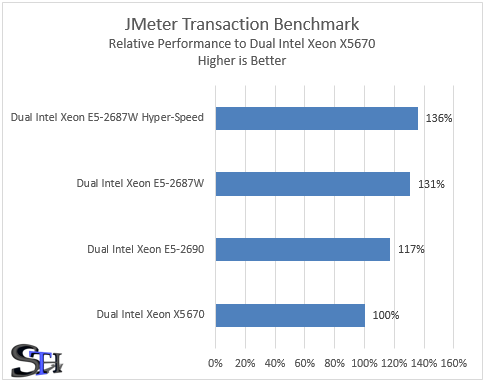
Likewise, on a very compute heavy GROMACS workload we see the Hyper-Speed platform shine.
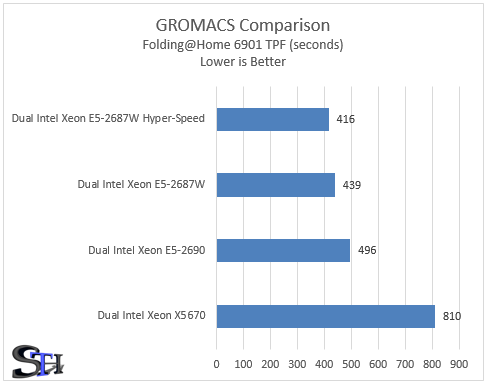
Aside from raw CPU performance upgrades thanks to a 6% clock speed bump over stock, we see large gains in terms of memory performance. Looking at our STREAM benchmark results with memory from 1066MHz to the Supermicro Hyper-Speed platform’s 1978MHz (over 1600MHz for Sandy Bridge-E normally), we saw some significant gains.
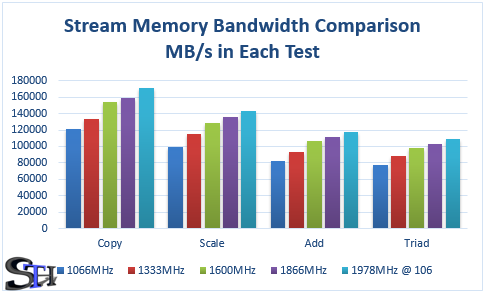
Supermicro does charge a premium for the speed increases, but that premium is in-line with the fact that it creates some of the fastest dual socket systems out there.
Power Consumption
In terms of power consumption, the Supermicro Hyper-Speed system did see a small bump in overall power consumption but not one that was disproportionate to performance gains.
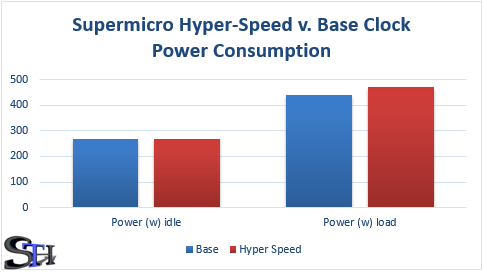
Overall the speed-ups did not require additional voltage to the CPUs which meant that thermals and power consumption stayed in-check.
Reliability
As ServeTheHome has been doing more longer-term testing in recent months, one thing that we try to do is target near worst-case scenarios. With the Supermicro Hyper-Speed platform, we ran the system very hard, above 90% CPU utilization on average. The system has still not seen a reboot for anything other than our changing hardware in over two months. From what we have seen, the higher clock speeds have been very stable, likely due to the design as well as the component qualification and selection processes.
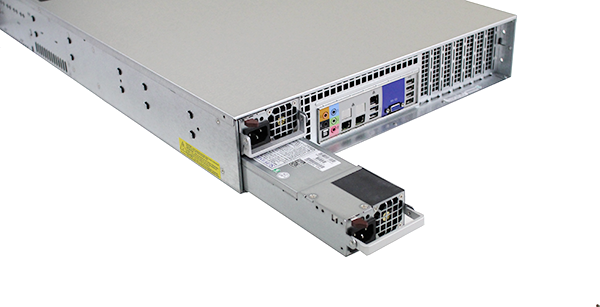
The system also has features such as large redundant power supplies to ensure that it will keep running in data center environments.
Conclusion
The Supermicro Hyper-Speed platform is certainly not a platform for everyone. Instead, it is a specialized platform that does very well for what it is designed to do. The platform has ample expansion options to customize solutions. Performance is above what one would get with other dual Intel Xeon E5 solutions which is important for applications such as data feed ingestion and processing. Power consumption is not much higher than we would see in standard dual Intel Xeon E5-2687W configuration. Overall, the Supermicro Hyper-Speed is a very impressive solution for those who need it.

